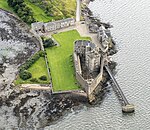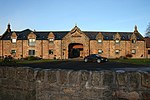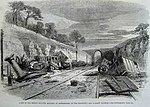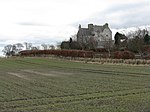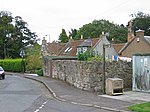House of the Binns

The House of the Binns, or simply the Binns, is a historic house in West Lothian, Scotland, the seat of the Dalyell family (pronounced dee el). It dates from the early 17th century, and was the home of Tam Dalyell until his death in January 2017. The estate spreads over two hills (bens in Gaelic) from which its name is derived, i.e. it is named "the house of the hills". It is set in 200 acres (80 hectares) of parkland, and the house enjoys panoramic views of central Scotland: to the north, across the River Forth to the Highlands, and south over the Pentland Hills. The house contains a collection of porcelain, furniture, and portraits which trace the family's lives and interests through the centuries.
Excerpt from the Wikipedia article House of the Binns (License: CC BY-SA 3.0, Authors, Images).House of the Binns
A904,
Geographical coordinates (GPS) Address External links Nearby Places Show on map
Geographical coordinates (GPS)
| Latitude | Longitude |
|---|---|
| N 55.990833333333 ° | E -3.5230555555556 ° |
Address
House of the Binns
A904
EH49 7NA
Scotland, United Kingdom
Open on Google Maps


